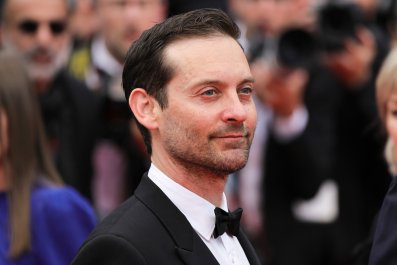Beneath an equestrian portrait of the 1st Duke of Marlborough, and opposite a cabinet filled with toy soldiers once admired by Winston Churchill, a vast, frameless painting dominates a corridor adjoining Blenheim Palace’s Great Hall. More than 11ft across, it depicts an opulent room, seen from above, with four gilt chairs set around a table on an oriental rug.
A room, then, fit for a palace, where rulers might carve up the world. Except, this scene is overlaid with a sinister saltire-shaped shadow – cast by a ceiling fan, perhaps, or a helicopter’s rotor blades – as if the interior, like a building marked with a plague cross, has been condemned.
It’s a ballsy house guest who accepts an invitation and then agitates for that house to be, as it were, burned down. But this, seemingly, is how the serious-minded Iraqi-born, London-based artist Mohammed Sami proceeds. Like the other 13 paintings (all produced over the past year) in his sorrowful new solo exhibition, After the Storm, The Grinder suits its sumptuous surroundings, while suggesting an alternative world in which those surroundings, and the privileged system they represent, are about to be torched.
Positioned provocatively (if too obviously) beside a display of Chinese porcelain, Wiped Off portrays smashed white china, beside a pool of blood; above the mantelpiece in the Green Drawing Room, a spot usually occupied by George Romney’s portrait of the 4th Duke, After the Storm mocks up the surrounding damask wallpaper – if it were damaged by bullet holes. Vive la revolution.
I cannot recall another artist chosen by Blenheim Art Foundation (which, this year, marks its 10th anniversary) who has thought harder or more attentively about how to respond to this grand setting. With subtle specificity, Sami alludes to the timeworn textures and colours of curtains, ceremonial flags, and tapestries, as well as wallpaper. These are paintings that, initially, blend in; the semi-abstract Joseph’s Coat even resembles a swatch of camouflage.
Yet, by projecting a sense of melancholy, lamenting the consequences of war, Sami’s gloomily nuanced compositions simultaneously stand out within this edifice built to commemorate a great, 18th-century military victory. In fact, they’re not fomenting revolution, but bemoaning bloodshed.
Most have a hazy, half-lit quality, as if depicting memories – including, indirectly, those of the artist, who grew up under Saddam Hussein, and experienced the West’s invasion of his homeland (the date of which is visible, as if stamped against chipboard, in Chandelier). In the Saloon, a stunning, 18ft-wide panorama, The Eastern Gate, depicts a silhouetted mosque in Baghdad seen through a fluorescent-orange dust cloud, with tank tracks in the foreground.
Sami, then, paints trauma, but trauma as it is remembered long after the event, when the pain, no longer physical, is psychological, half-numbed, yet still insistent.
The universalising finale, Hiroshima Mon Amour, presented as an altarpiece in the Chapel, is a departure. With its unexpected palette of watery blues and lilacs, and bilious, ghostly greens, it depicts ectoplasmic garments (the wispy souls of war’s brutalised victims?) ascending from an ocean’s depths towards heavenly light. Above all, it promises redemption, which, after so much anguish, is some relief.
From July 9; information: blenheimpalace.com
Disclaimer: The copyright of this article belongs to the original author. Reposting this article is solely for the purpose of information dissemination and does not constitute any investment advice. If there is any infringement, please contact us immediately. We will make corrections or deletions as necessary. Thank you.




